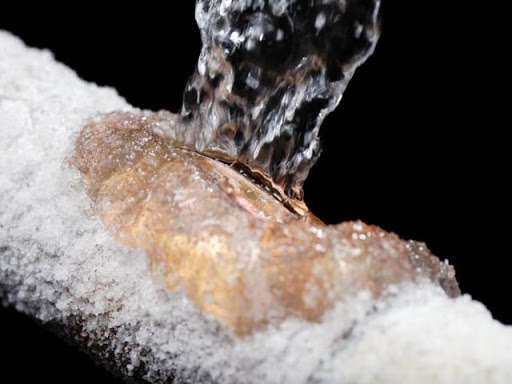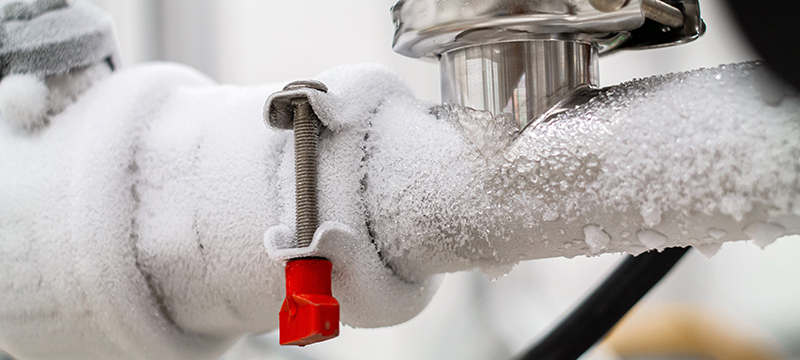Useful Tips for Winterizing Your Plumbing and Safeguarding Against Freezing Temperatures
Useful Tips for Winterizing Your Plumbing and Safeguarding Against Freezing Temperatures
Blog Article
We have encountered this post on How to Prevent Frozen Pipes down the page on the internet and believe it made perfect sense to share it with you in this article.

All home owners who live in temperate environments should do their ideal to winterize their pipes. Failure to do so can lead to disaster like icy, cracked, or burst pipes.
Activate the Faucets
When the temperature level declines as well as it appears as if the frigid temperature level will last, it will certainly assist to switch on your water both indoors and outdoors. This will maintain the water streaming via your plumbing systems. In addition, the motion will decrease the freezing process. Especially, there's no requirement to transform it on full blast. You'll wind up squandering gallons of water by doing this. Instead, go for regarding 5 declines per minute.
Open Up Cabinet Doors Hiding Plumbing
When it's cool outside, it would certainly be handy to open closet doors that are concealing your pipelines. For example, they could be somewhere in your kitchen area or bathroom. This will certainly enable the warm air from your heater to circulate there. Because of this, you protect against these revealed pipelines from cold. Doing this small method can keep your pipes warm as well as restrict the potentially hazardous end results of freezing temperatures.
Take Time to Cover Exposed Pipeline
One great and also very easy hack to heat up icy pipelines is to cover them with warm towels. You can likewise utilize pre-soaked towels in hot water, just do not forget to put on safety gloves to protect your hands from the warm.
Try a Hair Clothes Dryer or Warmth Weapon
When your pipes are almost freezing, your reliable hair clothes dryer or heat gun is a blessing. If the warm towels do not help remove any kind of clearing up ice in your pipes, bowling hot air directly right into them might assist. You may finish up damaging your pipes while trying to melt the ice.
When Pipes are Frozen, close Off Water
Switch off the main water valve instantly if you observe that your pipelines are completely icy or almost nearing that stage. You will normally discover this in your basement or utility room near the heater or the front wall surface closest to the street. Transform it off right away to stop more damage.
Don't forget to close exterior water resources, as well, such as your hookup for the yard home. Doing this will prevent additional water from filling your plumbing system. However, with more water, even more ice will pile up, which will at some point lead to break pipelines. It is best to call a specialist plumber for an examination if you are not sure regarding the state of your pipes this winter months. Taking this positive method can save you countless bucks out of commission.
All home owners that live in warm climates have to do their best to winterize their pipelines. Failure to do so can lead to calamity like frozen, split, or burst pipes. If the hot towels do not aid remove any settling ice in your pipelines, bowling hot air directly right into them may aid. Turn off the main water valve immediately if you discover that your pipelines are completely icy or nearly nearing that stage. With even more water, even more ice will pile up, which will ultimately lead to rupture pipes.
PREVENT YOUR PIPES FROM FREEZING THIS WINTER
A Leading Cause of Property Damage
When the weather is taking a deep nose dive into the cold dreary days, the risk of your pipes freezing and potentially bursting skyrockets. Unfortunately, during these cold dreary months, burst pipes are the most common denominator for property damage. The pipes that are most at the risk are those that are in areas where it is most cold in your home. For instance, pipes located in interior places such as basements, attics, and your garage. Unfortunately, that doesn’t mean that the pipes running through your cabinets or exterior walls can’t freeze. Good news, however, is that you can do things to help prevent pipes from freezing.
How to Prevent Pipes From Freezing
Once the temperature starts to drop during the winter, you should be taking the proper measures needed to ensure that your pipes stay warm and that there is circulation of water through them. Some steps that experts may recommend could go against your better judgement when it comes to saving water and heat. However, it would go without saying that when expenses are compared, damaged pipes could put a bigger dent in your wallet than a water bill.
What Can I Do?
Keep your garage door closed. This is very important, especially if you have water supply lines running through your garage. Open your kitchen and bathroom cabinets to allow warm air to circulate through them. Allow air circulation throughout your home. Keeping the interior doors open will once again allow the warm air to circulate inside your home. Ensure your thermostat is running the same temperature throughout the night and day. If you plan to be away from home during the cold months, set your temperature no lower than 55° F. This should provide enough heat to keep the pipes warm and prevent any remaining water inside the pipes from freezing. For more of a long-term solution, add insulation to attics, basement, and other crawl spaces around your home. By allowing your faucet to drip, it will alleviate pressure in the system. This is important because the pressure that is created between the blockage and the faucet can potentially cause the pipes to burst. Allowing the faucet to drip will prevent the pressure from building up, therefore keeping the pipes from bursting. Seal any cracks, openings, and crawl spaces around your home to prevent cold air from coming inside. This keeps your pipes-not to mention your home-warmer and less susceptible to issues caused by freezing temperatures. For the pipes in your home that are easily accessible, applying electrical tape to them might prevent them from freezing over. This is a quick fix, as you can apply the tape directly to the pipe. There are two options for heating tapes. One turns on and off by itself when it senses heat is needed. The other type of heating tape needs to be applied when heat is needed and removed when not necessary. If you have exposed pipes in your home, you can check this website to take a look at a few options that would be available at a shop near you.

Do you appreciate reading about Winterizing Your Pipes? Place a comment down below. We will be pleased to listen to your insights about this article. Hoping that you visit us again later on. Sharing is good. Who knows, you may be doing someone a favor. Thanks a bunch for your time. Visit again soon.
Stay calm, contact! Report this page